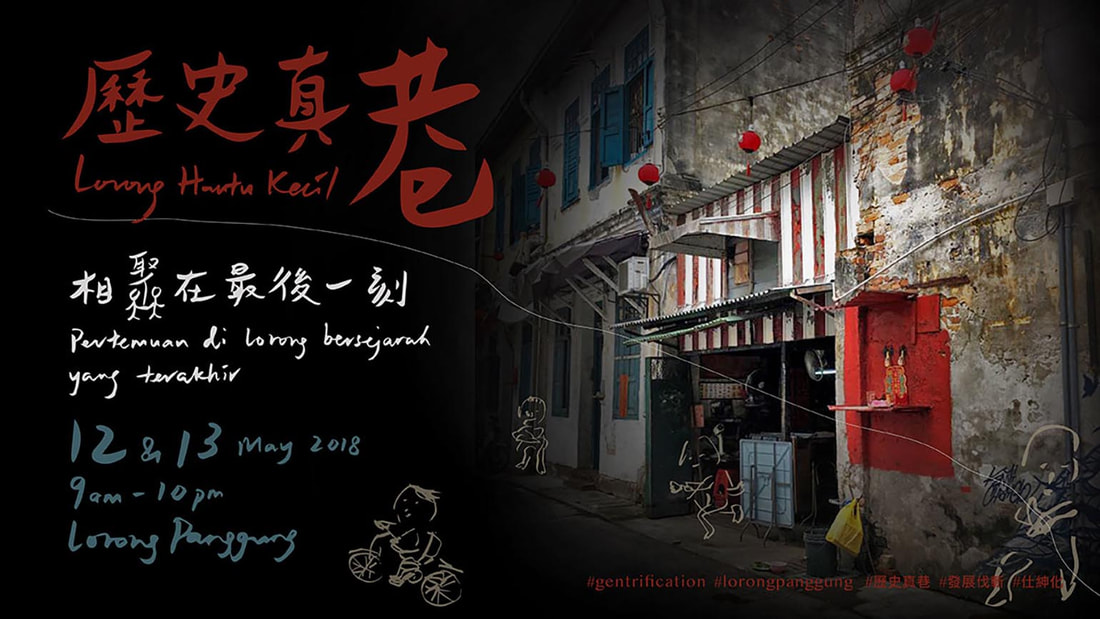Lost of Kuala Lumpur
About a hundred years ago, the ancestors who coming from Indonesia, China and South India then lived along the River Gombak in Kuala Lumpur, formed the unique Kampung Bandar Dalam, Kampung Railway and Petaling Street community. A hundred years later, under the great wheel of development, the cultures of these settlements were gradually disappeared. The residents of these three places once joined together to defend each other’s history and culture. The exhibition will display these forgotten cultural and historical fragments, aiming to awaken the public’s attention to the crisis of disappearing historical memory in Kuala Lumpur.
About a hundred years ago, the ancestors who coming from Indonesia, China and South India then lived along the River Gombak in Kuala Lumpur, formed the unique Kampung Bandar Dalam, Kampung Railway and Petaling Street community. A hundred years later, under the great wheel of development, the cultures of these settlements were gradually disappeared. The residents of these three places once joined together to defend each other’s history and culture. The exhibition will display these forgotten cultural and historical fragments, aiming to awaken the public’s attention to the crisis of disappearing historical memory in Kuala Lumpur.
|
Kampung Bandar Dalam
In about 1830, due to the war, the Minangkabau people of Sumatra crossed the Strait of Malacca and came to the Malay Peninsula. Later, most of them settled by the river Gombak in Selangor and formed a Malay settlement called Kampung Bandar Dalam. In 2011, this century-old village faced an expropriation, the future Light Rail Transit (LRT) project going to pass through the village. This development plan was strongly opposed by the residents, under the leadership of the mayor Cikgu Haji Ishak Surin, the villagers raise the black flag and display panels full of words strongly opposed to development around the village. With the villagers come together, Kampung Bandar Dalam is one of the few successfully case defended their village, their own cultural and historical heritage. |
Villagers Life
|
|
Village Scenery
|
Religion
|
|
|
TransActions in the Field
Challenging the Role of Citizen Participation through Participatory Public Art TransActions in the Field (TATF) is an inter-Asia masterclass which took place from 14 – 26 November 2015 in Kuala Lumpur. This 12-day program functioned as a platform of co-creation and co-intelligence for established and emerging creative practitioners in the interface between art and society to develop and share skills and experiences. The masterclass explored on how to improve the conditions and skills to produce new forms of public art nationally and internationally. |
|
Bengkel Pemetaan Kampung Bandar Dalam
(Kampung Bandar Dalam Cultural Mapping Workshop) Taking the village’s history, geography, culture, landscape, and resources as the background, along with field visits and “Curatorial Topography” as a method,the host will talk about Taiwan’s experience and methodology. On the other hand, the local leaders and artists share the current situation, and both create “imagine the future of the village through art”. |
|
|
|
Buku Jalanan Chow Kit – Moving Library Project
Tamkang University (Dept. of Architecture) and Buku Jalanan Chow Kit The collaboration of Tamkang University (Department of Architecture) and Buku Jalanan focusing on how design functions as a creative way to resolve or upgrade mobility and operation difficulties, book collection and better interaction with participants, as well as bringing design and practical aesthetics to the streets. |
|
Kampung Railway
In 1886, the British colonial government in Malaya started the Peninsula Railway Project. Around 1896, the Selangor Railway was built. A large number of South Indian laborers were brought to the Malay Peninsula to carry out this construction project. The railway village (Kampung Railway) in Sentul, Kuala Lumpur, was the settlement of railway construction workers, and they were there lasted for four generations. In the recent years, Kampung Railway has been continuously pressed by the big corporate, and the villagers carried out many resistances. In the end, on the night of after the Christmas 2013, all the villagers was forced out of the village where four generations of people lived, and the settlement was razed to the ground within a few days. Since then, the history and culture of this Kuala Lumpur’s only more than hundred years old railway village disappeared on the map forever. |
Religion
|
|
Village Scenery
|
Villagers Life
|
|
Petaling Street, Lorong Panggung
This is the last alley on Petaling Street, Kuala Lumpur where there are still residents. A short lane has a rich cultural history, in addition to residents of different backgrounds and nationalities, some tenants even lived for four generations. There is also a lion dance troupe, old-fashioned coffee shop and knife-sharpening craft. There was also a known martial arts master have a “dit da” center here. Many martial arts practitioners from Hong Kong will visit him to exchange kung fu skills. In 2017, this place was completely emptied, peoples were forced to leave. The last historical alley was replaced by gentrification and artificial-historical businesses. |
Lorong Hantu Kecil Community Art Event
Pertemuan di Lorong Bersejarah yang Terakhir |
|
Village Scenery
|
Villagers Life
|


